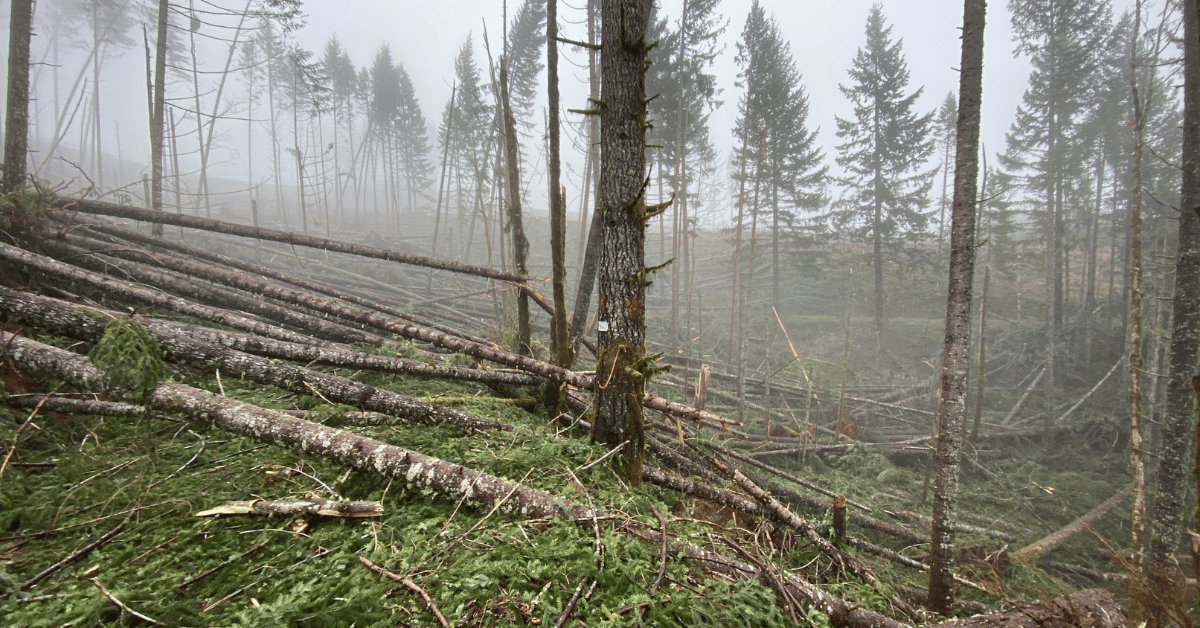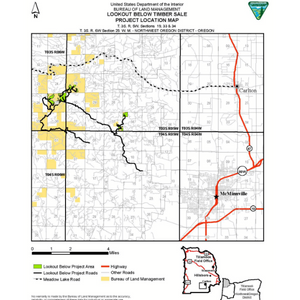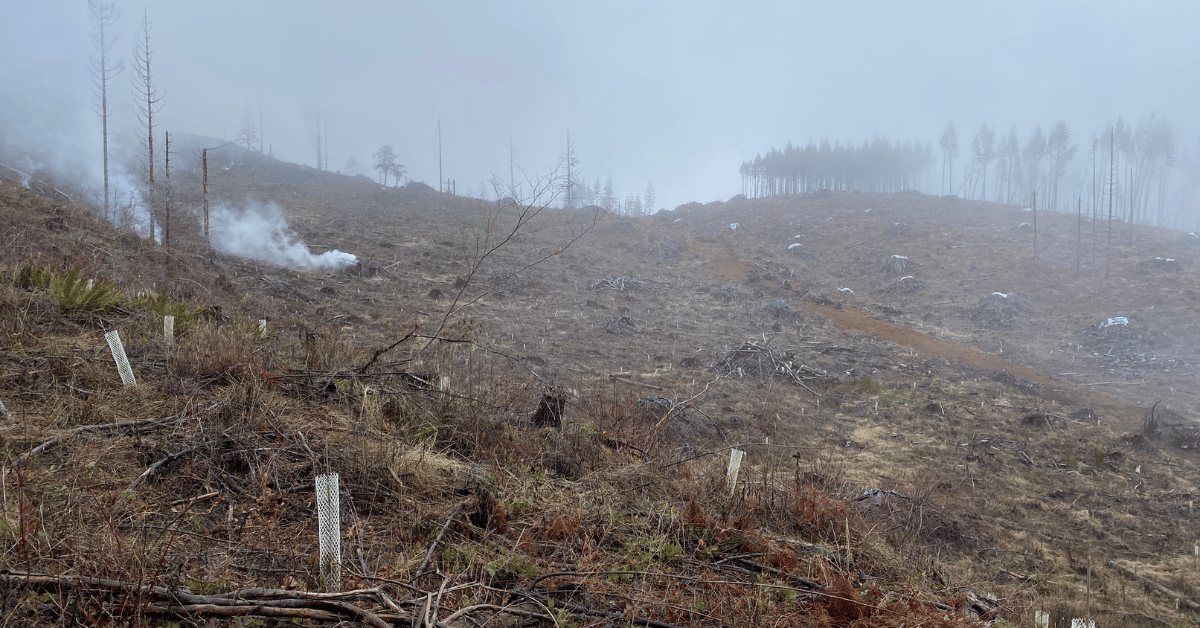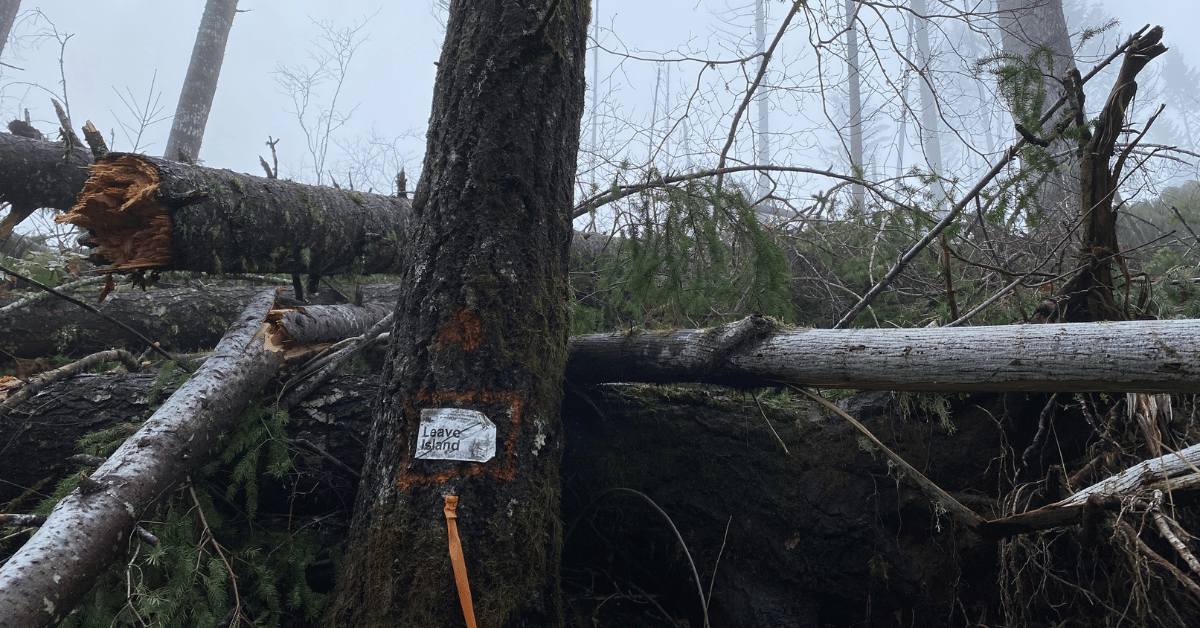
On a cold foggy recent day, Casey Kulla and I drove up to Unit 1 of the Bureau of Land Management’s Lookout Below logging sale within the Panther Creek project area. The scene was a stunning rebuke to those who insist that clearcutting no longer occurs on federal public lands. In fact, at 150 acres, this “regeneration harvest” unit was larger than the maximum allowable size for private industrial clearcuts (which happen regularly on surrounding lands).

But the clearcutting was only part of the tragedy of this once-forest.
Accessed by a road long-gated to public use, High Heaven Road winds out of McMinnville into the checkerboard of rural properties, industrial timber lands, and federal forests managed by the Bureau of Land Management that cover the eastern flanks of the Coast Range. Trails used by local hunters, hikers, and foragers wind through the woods nearby.
When the BLM proposed the Panther Creek project in late 2018, Oregon Wild commented and raised concerns over the aggressive logging’s impacts on streams, natural forest structure, wildlife, and the climate. We noted that mature forests in this area are rare, while young replanted plantations are in abundance. The agency did not alter their project in response, and eventually authorized 800 acres of logging within what the BLM calls their “harvest land base” and within riparian reserves (areas supposedly designated to protect streams and wetlands from industrial logging). Over 400 acres of that is so-called “regeneration harvest” (aka, clearcutting) of forest stands up to 114 years old, in addition to commercial thinning in plantations.

In the timber sale plan, only 13% of the roughly 60-year-old plantation forest was to be retained, mostly in clumps, in the unit. The area was logged and replanted last year, but as this winter’s storms hit, many of the trees that remained in these clumps, called “leave islands,” were toppled by the wind. They had been weakened from years of growing in an overcrowded plantation, were top-heavy, and brutally exposed to the elements after the surrounding hillslope was clearcut in this sale.
Wind storms are difficult to predict but not unexpected in the Coast Range, and this blow-down event (adding insult to injury in this clearcut forest landscape) may have been avoided by careful thinning of the forest or retaining more trees scattered in the logging area instead of clearcutting. The BLM chose to pursue this more aggressive logging approach over thinning in order to meet the timber harvest quota set by its management plan, despite the added negative ecological impacts. This drive for production has led to this forest missing even more of the carbon storing, wildlife habitat providing, water filtering trees the BLM said would be retained.

As the BLM continues to plan and implement timber sales that target mature forests with aggressive methods, Oregon Wild and our partners are working to highlight the flagrant violation of President Biden’s Executive Order issued last April which called on federal agencies- including the BLM - to protect mature and old growth forests amid mounting scientific evidence of the importance of these forests for our climate.
You can support our work to protect mature and old-growth forests: Sign our petition to the Biden administration now.

